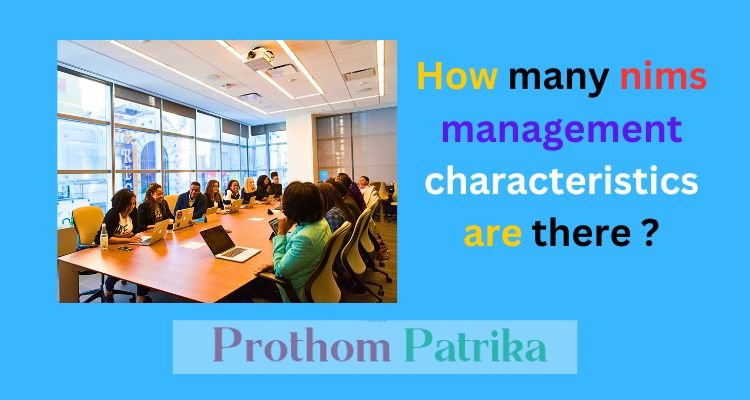NIMS is a comprehensive framework established by the United States government for managing incidents including emergencies disasters and other crisis situations. So many people want to know that how many nims management characteristics are there .This post provides detailed information on this topic.
How many management characteristics are there in Nims ?

NIMS National Incident Management System is a comprehensive framework established by the United States government for managing incidents including emergencies disasters and other crisis situations. So many people want to know that how many nims management characteristics are there . NIMS provides a standardized approach and set of principles to guide incident management activities. While NIMS does not explicitly outline a specific number of management characteristics it does emphasize several key principles and components.
Here are some essential characteristics of NIMS:
Incident Command System (ICS)
- ICS provides a standardized organizational structure and a systematic approach to command control and coordination of emergency response activities.
- It establishes clear lines of authority and reporting, ensuring that all personnel involved understand their roles and responsibilities within the incident management structure.
- ICS uses a modular organization allowing for scalability and flexibility to match the complexity and demands of the incident.
Unified Command
- Unified Command is employed when multiple agencies or jurisdictions have authority and responsibility for the incident response.
- Under Unified Command representatives from different organizations collaborate and make consensus-based decisions to ensure a coordinated and integrated response.
- This approach facilitates effective information sharing resource allocation and unified objectives.
Incident Action Planning
- Incident Action Planning involves developing a comprehensive plan that outlines the overall objectives, strategies, and tactics to be implemented during an incident.
- The plan addresses operational priorities, resource needs, communication protocols, and potential contingencies.
- Incident Action Plans are regularly updated and serve as a guide for all personnel involved in the incident response.
Manageable Span of Control
- The concept of a Manageable Span of Control ensures that supervisors or managers have an appropriate number of subordinates to oversee effectively.
- It helps prevent overwhelming supervisors with too many direct reports which could impede communication, coordination and decision making.
Resource Management
- 1NIMS emphasizes the efficient and effective management of resources during an incident.
- This includes identifying the resources needed, acquiring and organizing resources from various sources, tracking their deployment and availability, and demobilizing resources when they are no longer required.
- Resource Management aims to ensure that resources are allocated where they are most needed and that resource requests are fulfilled promptly.
Information and Intelligence Management
- Information and Intelligence Management involves the systematic collection, analysis, and dissemination of accurate and timely information and intelligence.
- It facilitates situational awareness and supports decision making processes.
- Effective information and intelligence management enable responders to understand the evolving incident and adapt their strategies accordingly.
Integrated Communications
- NIMS emphasizes the need for integrated and interoperable communication systems among responding agencies and organizations.
- This enables seamless communication and information sharing across different disciplines and jurisdictions involved in the incident response.
- Integrated communications ensure that all relevant personnel can effectively communicate and coordinate their efforts during an incident.
Command and Coordination
- NIMS promotes clear command structures and coordination mechanisms to ensure effective incident management.
- Command establishes leadership, establishes objectives, and makes critical decisions.
- Coordination fosters collaboration and information sharing among all involved agencies, organizations and levels of government.
Accountability
- NIMS emphasizes clear roles, responsibilities and accountability for all personnel involved in incident management.
- Each individual and organization has defined tasks and functions and they are accountable for carrying out their assigned duties effectively.
- Accountability ensures that actions are transparent and performance can be evaluated.
Ongoing Management and Continuous Improvement
- NIMS encourages a culture of ongoing management and continuous improvement in emergency management.
- This involves conducting post incident reviews, identifying lessons learned and implementing changes to enhance future preparedness and response capabilities.
- Training programs, exercises and regular evaluations help maintain readiness and foster a culture of continuous improvement.
These characteristics collectively provide a framework for effective incident management, enabling a coordinated, scalable and adaptable response to emergencies and disasters.
